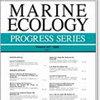吞食有害甲藻 Dinophysis acuminata 的 Acartia tona 会降低桡足类的存活率并增加细胞外毒素浓度
IF 2.1
3区 环境科学与生态学
Q2 ECOLOGY
引用次数: 0
摘要
ABSTRACT: Dinophysis spp.会合成亲脂性毒素并在全球范围内形成有害藻华(HABs)。浮游动物可在控制有害藻华方面发挥作用,同时也是有害藻华毒素的传播媒介。在此,研究人员给分离自美国纽约的桡足类 Acartia tonsa 喂食了 3 种来自美国东部(马萨诸塞州、纽约州和弗吉尼亚州)的 D. acuminata 菌株以及 2 种无毒猎物(Rhodomonas salina 和 Gymnodinium aureolum)。对扁囊藻的捕食率和存活率以及毒素进行了量化。A. tonsa捕食 D. acuminata 的比率与 R. salina 和 G. aureolum 相似。混合捕食实验表明,D. acuminata 对扁豆虫没有急性毒性。暴露于桡足类后,细胞外 okadaic 酸(OA)水平显著增加(p ≤ 0.05),细胞外 pectenotoxin(PTX2)增加了 50%,表明食草动物刺激了细胞外毒素的释放。在为期 3 周的存活实验中,与饲喂盐渍桡足类对照食物的桡足类相比,仅以 D. acuminata 为食物来源的桡足类存活率明显较低(p < 0.05)。给桡足类喂食混有金线莲的 D. acuminata 后,存活率下降的情况有所改善,这表明营养缺乏导致了死亡。由于在猎物丰度较低时,对Dinophysis的捕食可能较少,因此减少捕食可能有助于藻华的发展;然而,随着藻华的加剧,捕食可能会增加,从而可能导致桡足类存活率下降和藻华继续发展。最后,放牧引起的 OA 和 PTX2 的增加可能会促进 Dinophysis 衍生毒素进入食物网。本文章由计算机程序翻译,如有差异,请以英文原文为准。
Acartia tonsa grazing on the harmful dinoflagellate Dinophysis acuminata reduces copepod survival and increases extracellular toxin concentrations
ABSTRACT: Dinophysis spp. synthesize lipophilic toxins and form harmful algal blooms (HABs) across the globe. Zooplankton can play a role in controlling HABs and be a vector for HAB toxins; however, no study has explored the grazing and survival of copepods fed cultured Dinophysis. Here, the copepod Acartia tonsa isolated from New York, USA, was fed 3 strains of D. acuminata from the eastern USA (Massachutsetts, New York, Virginia), as well as 2 non-toxic prey (Rhodomonas salina and Gymnodinium aureolum). Grazing and survival rates of A. tonsa were quantified along with toxins. A. tonsa fed on D. acuminata at rates similar to R. salina and G. aureolum. Mixed-prey experiments suggested that D. acuminata was not acutely toxic to A. tonsa. Extracellular levels of okadaic acid (OA) significantly increased (p ≤ 0.05) and extracellular pectenotoxin (PTX2) increased by 50% upon exposure to copepods, suggesting that grazers stimulated extracellular toxin release. During 3 wk survival experiments, copepods consuming D. acuminata as a sole food source displayed significantly lower survival rates compared to those fed a control diet of R. salina (p < 0.05). This depressed survivorship was ameliorated by feeding the copepods a diet of D. acuminata mixed with G. aureolum, suggesting that nutritional deficiencies drove mortality. Since grazing on Dinophysis may be low when prey abundance is low, reduced grazing may contribute to bloom development; however, as blooms intensify, grazing may increase, potentially causing a reduction in copepod survival and continued bloom progression. Finally, grazing-induced increases in OA and PTX2 could enhance the introduction of Dinophysis-derived toxins into food webs.
求助全文
通过发布文献求助,成功后即可免费获取论文全文。
去求助
来源期刊

Marine Ecology Progress Series
环境科学-海洋学
CiteScore
5.30
自引率
8.00%
发文量
238
审稿时长
3 months
期刊介绍:
The leading journal in its field, MEPS covers all aspects of marine ecology, fundamental and applied. Topics covered include microbiology, botany, zoology, ecosystem research, biological oceanography, ecological aspects of fisheries and aquaculture, pollution, environmental protection, conservation, and resource management.
 求助内容:
求助内容: 应助结果提醒方式:
应助结果提醒方式:


